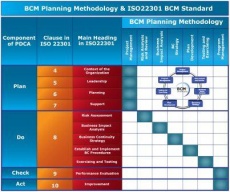Plan-Do-Check-Act Cycle
Jump to navigation
Jump to search
1. Plan-Do-Check-Act (PDCA) Cycle is an iterative four-step problem-solving process typically used in business process improvement.
  Notes:

|

1. Plan-Do-Check-Act (PDCA) Cycle is an iterative four-step problem-solving process typically used in business process improvement.
  Notes:

|
